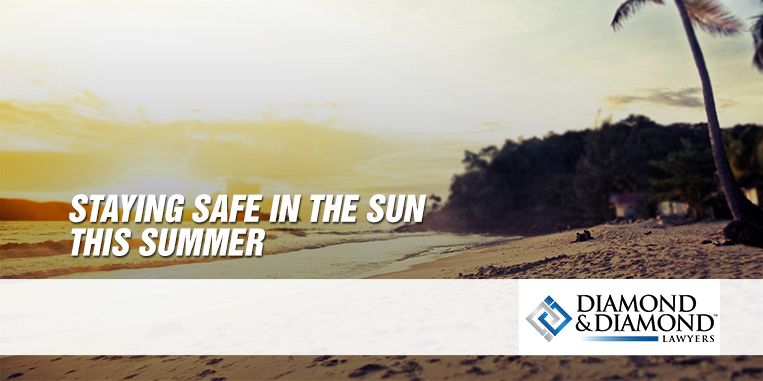Soaking up the sun is one of the most relaxing activities that you can enjoy this summer. There are many benefits to sun exposure, including an increase in Vitamin D and a positive effect on your overall mood. Enjoying your time in the sun may also lower your cholesterol and blood pressure as well. Nonetheless, there are certainly some dangerous aspects to basking in the sun, too.
Ultraviolet (UV) rays from sun exposure are the number one cause of skin cancer. Excess exposure can also cause eye damage, sunburns, and premature wrinkles as well. However, you can take certain precautions to decrease the risks associated with sun exposure.
Cover Up!
Wearing clothing is one of the best ways to prevent painfulsunburns and other damage. Loose-fitting clothing that includes natural fibers works best. You should also consider adding a wide-brimmed hat to protect your face and scalp from the sun as well. Sunglasses with UV protection can help you prevent eye damage, too.
When wearing extra clothing is not possible or practical, use a sunscreen that has at least SPF 30 or higher. Water and sweat can undermine the effectiveness of sunscreen, so be sure to reapply as needed. You should also reapply your sun screen roughly every two hours as well.
Seek Shade When Possible
The sun can not only cause skin damage and eye damage, but it can also result in heat-related illnesses as well. Sitting in the shade can help keep you cool and out of the sun’s direct rays. Take an umbrella with you to the beach, if possible.
While you can still be affected by the sun in the shade, the risk is considerably less. If you cannot sit in the shade the whole time, be sure to take shady breaks often.
To avoid overheating, you should also drink plenty of liquids—water is the best option. You should have at least four ounces every 30 minutes if you are physically active. It may also be a good idea to take a cool shower after being outdoors to help bring your body temperature down.
Picking the Right Sun Screen
You should choose a high SPF sunscreen to protect you from the sun. On a daily basis, your SPF should be at least 15, but if you are expecting to spend considerable time in the sun, using something higher is a good idea. Be sure to also choose a sunscreen that indicates that it is “broad-spectrum.” This means that it protects from both UVA and UVB rays.
You should apply your sunscreen at least 20 minutes before you plan to be outside. Apply some more 20 minutes after being outside and then every two hours after that. Use a generous amount, and be sure to apply to overlooked areas, like the back of the neck, tops of the ears, and tops of the feet. Look for “water resistant” formulas as well.
No sunscreen will protect you completely from harmful UV rays, but it can certainly help. Be sure to read the labeling to ensure that you are applying your sunscreen correctly.
Be Aware of Risky Times
The sun and heat are the most intense between 11 a.m. and 4 p.m. If possible, limit your time in the sun during those hours. The sun is the most intense when your shadow is shorter than you. You can also check for the UV index for your area to determine how intense the UV rays are at a given moment. When the UV index is higher than three, you should be sure to wear sunglasses, sunscreen, and protective clothing.
